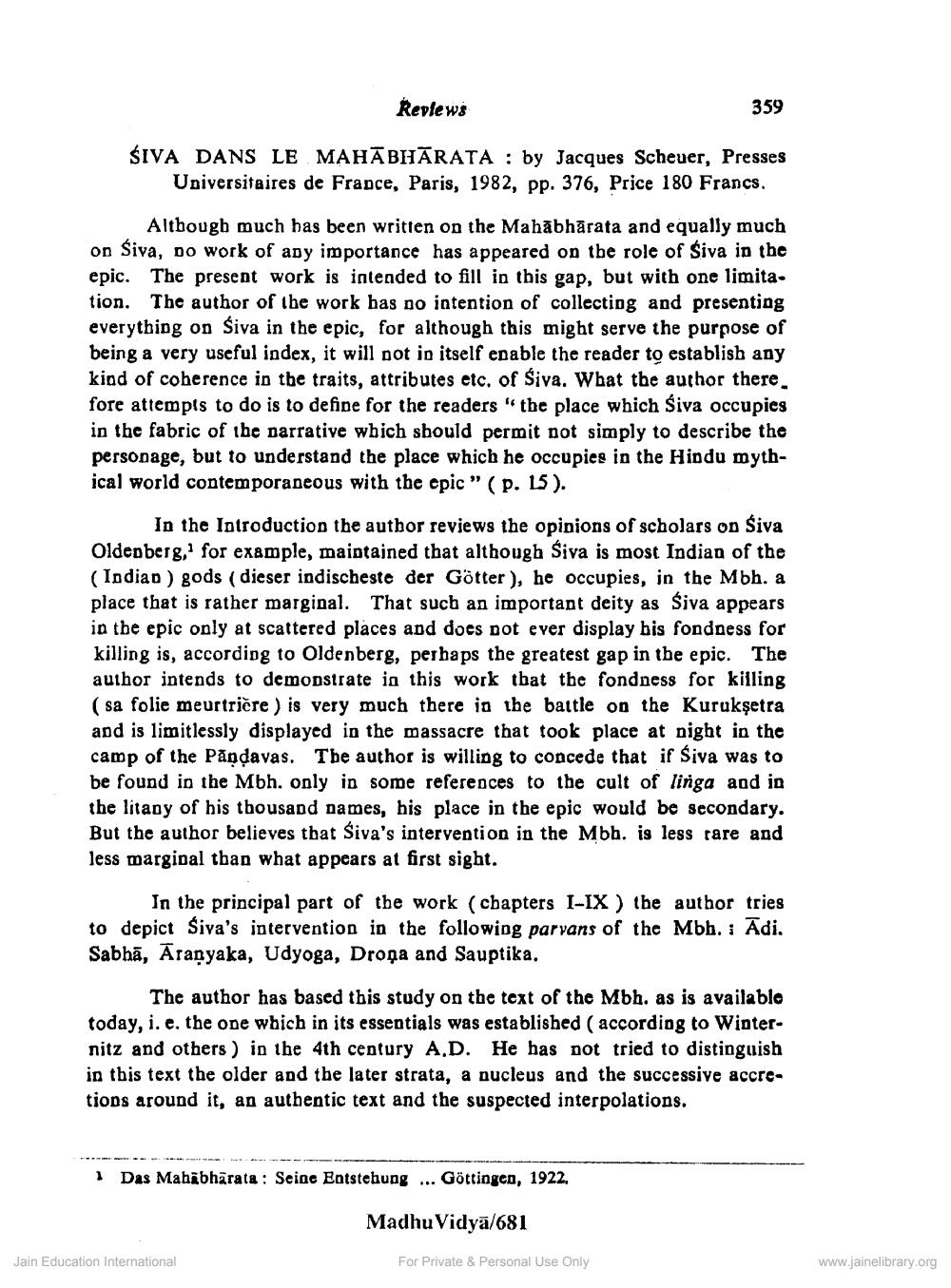________________
Reviews
SIVA DANS LE MAHABHARATA
by Jacques Scheuer, Presses Universitaires de France, Paris, 1982, pp. 376, Price 180 Francs.
Although much has been written on the Mahabharata and equally much on Siva, no work of any importance has appeared on the role of Siva in the epic. The present work is intended to fill in this gap, but with one limitation. The author of the work has no intention of collecting and presenting everything on Šiva in the epic, for although this might serve the purpose of being a very useful index, it will not in itself enable the reader to establish any kind of coherence in the traits, attributes etc. of Siva. What the author there fore attempts to do is to define for the readers "the place which Śiva occupies in the fabric of the narrative which should permit not simply to describe the personage, but to understand the place which he occupies in the Hindu mythical world contemporaneous with the epic" (p. 15).
In the Introduction the author reviews the opinions of scholars on Śiva Oldenberg, for example, maintained that although Siva is most Indian of the (Indian) gods (dieser indischeste der Götter), he occupies, in the Mbh. a place that is rather marginal. That such an important deity as Šiva appears in the epic only at scattered places and does not ever display his fondness for killing is, according to Oldenberg, perhaps the greatest gap in the epic. The author intends to demonstrate in this work that the fondness for killing (sa folie meurtrière) is very much there in the battle on the Kurukşetra and is limitlessly displayed in the massacre that took place at night in the camp of the Pandavas. The author is willing to concede that if Śiva was to be found in the Mbh. only in some references to the cult of linga and in the litany of his thousand names, his place in the epic would be secondary. But the author believes that Šiva's intervention in the Mbh. is less rare and less marginal than what appears at first sight.
359
In the principal part of the work (chapters I-IX) the author tries to depict Siva's intervention in the following parvans of the Mbh. : Adi. Sabha, Aranyaka, Udyoga, Droga and Sauptika,
The author has based this study on the text of the Mbh. as is available today, i. e. the one which in its essentials was established (according to Winternitz and others) in the 4th century A.D. He has not tried to distinguish in this text the older and the later strata, a nucleus and the successive accretions around it, an authentic text and the suspected interpolations.
1 Das Mahabharata: Seine Entstehung... Göttingen, 1922,
Madhu Vidya/681
Jain Education International
For Private & Personal Use Only
www.jainelibrary.org




